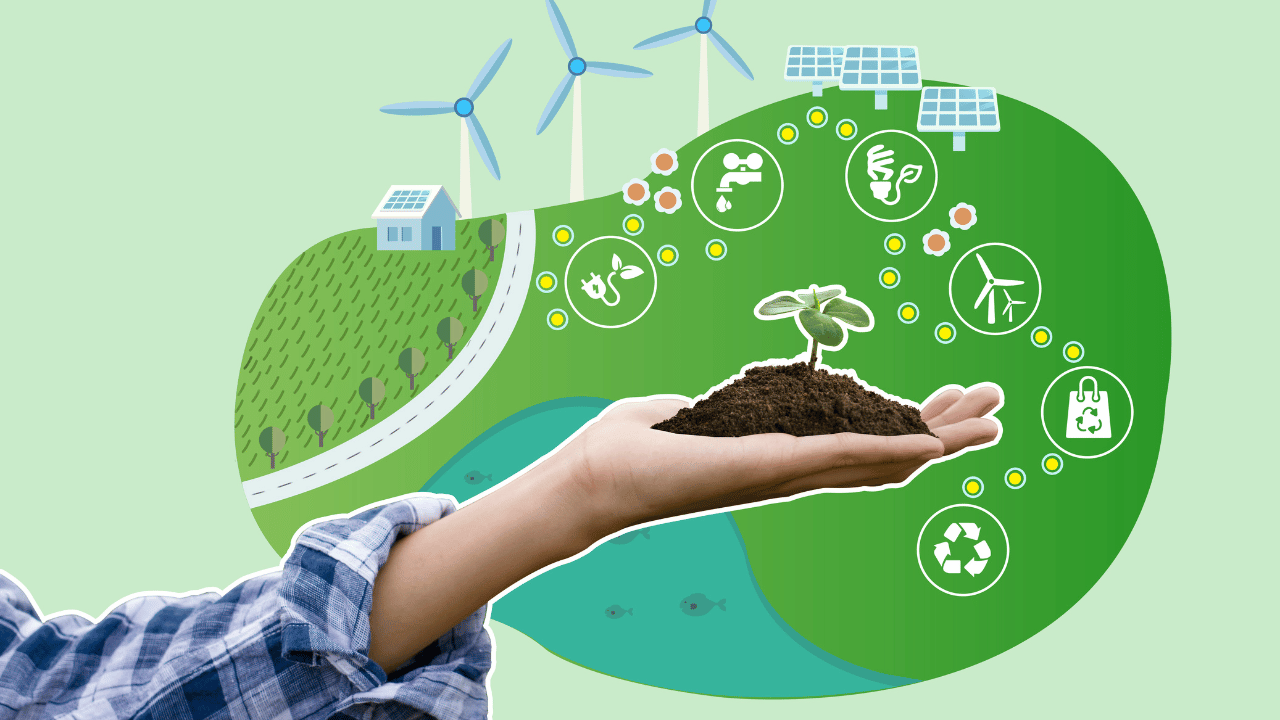Last Updated on September 11, 2023 by Pro Handyman Australia – Editorial Team
Transitioning to a smart home isn’t just about convenience or the allure of cutting-edge technology; it’s about being environmentally responsible. When we take steps to enhance the efficiency of our homes, we’re not only saving money but also significantly reducing our carbon footprint.
Why Efficiency Matters
The environmental benefits of smart homes stem from their innate capabilities of automation, sensing, and remote control. These attributes ensure that the household operates optimally, cutting down on unnecessary energy consumption. If you’ve been contemplating ways to reduce your ecological impact, the integration of smart devices into your daily life can serve as a robust starting point.
The Path to Sustainable Living
The potential of smart home systems to conserve energy and natural resources is vast. By strategically integrating these technologies into our living spaces, we position ourselves at the forefront of sustainable living, harnessing tech-driven solutions for the betterment of our planet.
Tapping into the Green Potential of Smart Homes
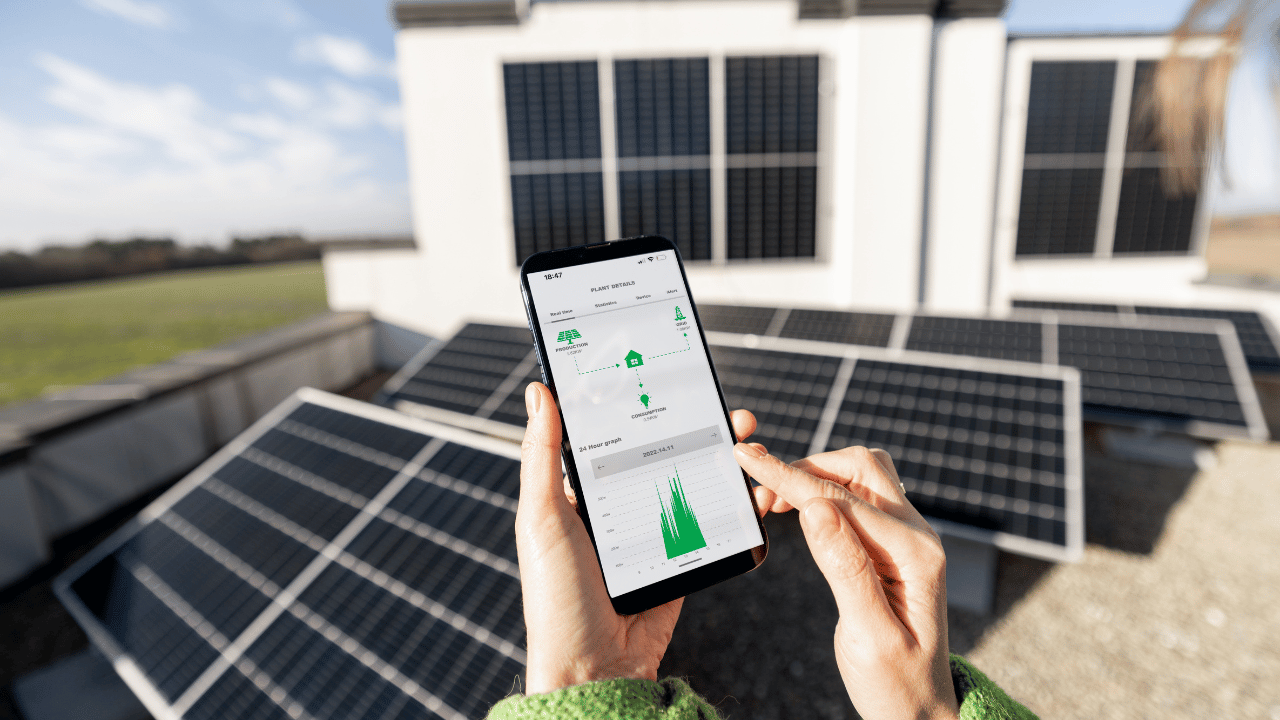
Optimizing Energy Usage
One of the main benefits of smart homes is their unparalleled capability to fine-tune energy consumption. Smart lighting systems, equipped with energy-saving LED bulbs, use both occupancy sensors and natural light detection. These systems ensure that lights adjust automatically based on the presence of inhabitants and the influx of natural sunlight, thereby enhancing energy conservation.
Water Conservation Strategies
Smart homes have an edge when it comes to water preservation. By utilizing smart irrigation systems that leverage weather forecasts and soil moisture data, gardens are only watered when truly needed, cutting back on excess usage. Furthermore, the inclusion of leak detection sensors in smart homes means swift detection of plumbing issues, ensuring swift fixes and reduced water wastage.
Innovations in Waste Management
In the realm of waste reduction, smart home technologies, particularly smart appliances, are making a difference. For instance, smart refrigerators, which track the freshness of stored food items, notify homeowners of impending expiry dates, which can help cut down on food wastage. Also, appliances like dishwashers and washing machines are designed to customize water and detergent usage based on the size of the load. All these measures not only reduce waste but also support a sustainable circular economy.
Breathing Easier with Enhanced Air Quality
Prioritizing the health of residents, smart homes come with air quality sensors that monitor harmful elements, such as VOCs and particulate matter. Using this data, ventilation can be adjusted to maximize fresh air while filtering out contaminants. Additionally, smart air purifiers actively target and remove harmful pollutants, ensuring a healthier home environment.
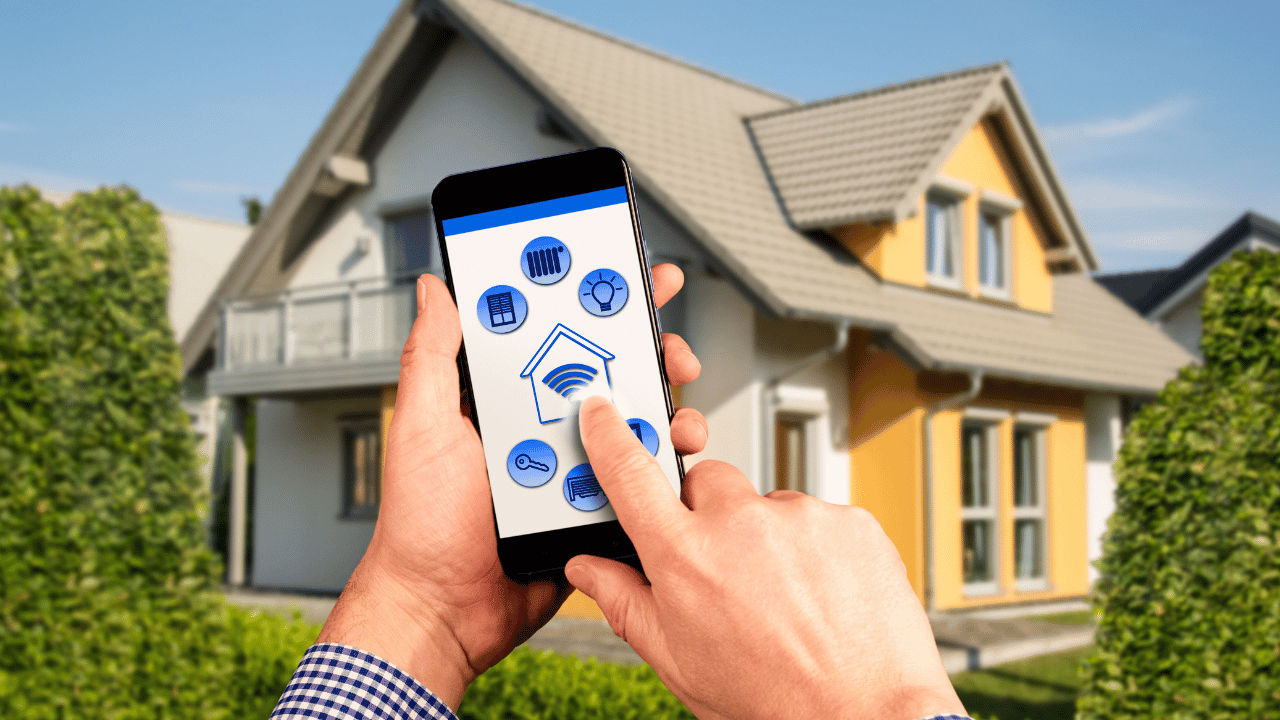
Lighting that Syncs with Nature
Beyond just energy conservation, smart lighting systems are designed to enrich the ambiance of living spaces. Features like dimming, color temperature shifts, and scheduling enable homeowners to simulate natural daylight transitions, making spaces feel more organic. Plus, sensors detect room occupancy and manage lighting accordingly, avoiding unnecessary power usage.
Proactive Waste Management
Furthering waste management, some smart trash bins are equipped to gauge waste levels, alerting homeowners or waste services for timely disposal. Advanced systems can even segregate recyclables from general trash, fostering sustainable disposal habits and streamlining the recycling process.
Smart Climate Control
Advanced thermostats and climate systems leverage algorithms and occupancy data to refine heating and cooling. By understanding residents’ routines, these systems can regulate temperatures to enhance comfort while being energy-conscious.
Promotion of Eco-friendly Transportation
Smart homes are future-ready, with capabilities to integrate with electric vehicle charging solutions. This promotes the use of electric vehicles, which reduces carbon emissions and decreases reliance on fossil fuels.
Empowerment through Remote Control
Remote monitoring and control stand out as pivotal smart home features. With real-time data available through mobile apps, homeowners can oversee and regulate their home’s energy usage even while away, preventing any inadvertent wastage.
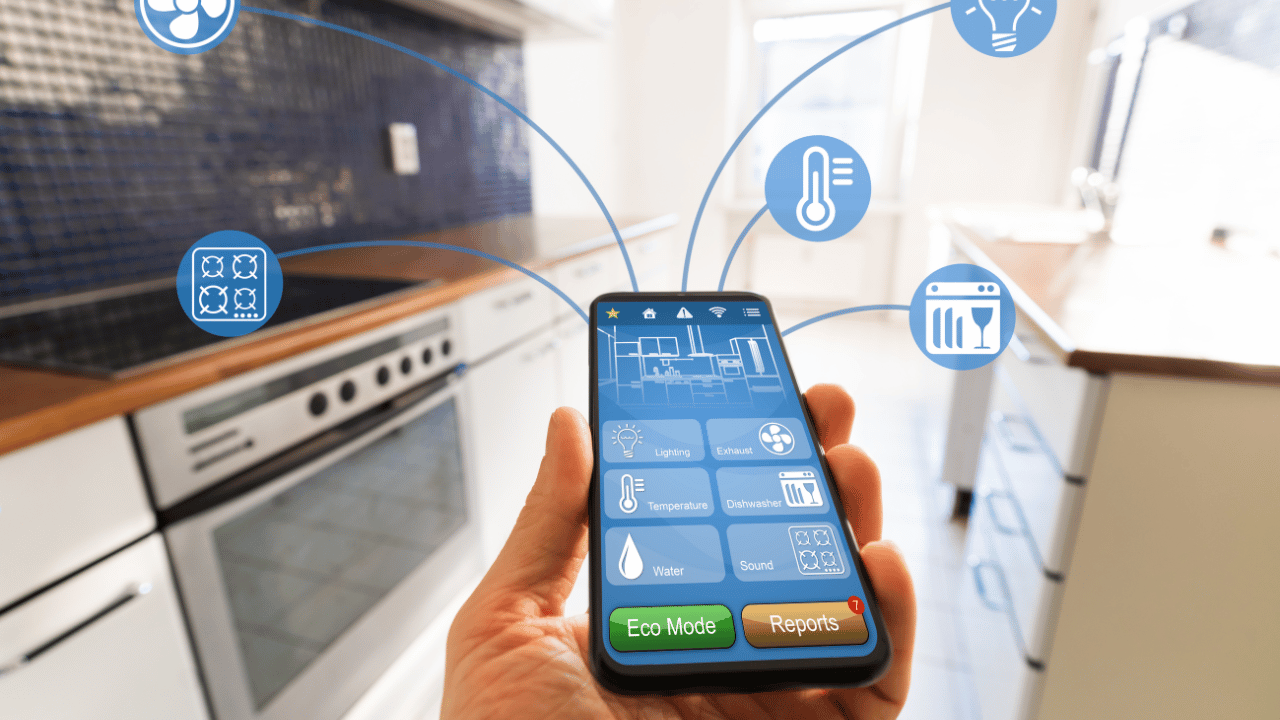
Harnessing Data for Conservation
Smart homes are repositories of vital data regarding energy and water usage. By analyzing these patterns, homeowners can pinpoint areas that need optimization. Comparing one’s consumption against larger averages can also provide context, allowing for more deliberate, environment-conscious decisions. This data-centric approach magnifies the conservation impact of smart homes.
The Transformative Potential of Smart Homes
Embracing smart homes offers a unique chance to alleviate environmental challenges and pave the way for a more sustainable lifestyle. By integrating energy-efficient technologies and intelligent resource management, homeowners are empowered to make choices that leave a lesser environmental footprint.
Data-Driven Environmental Stewardship
The insights gleaned from smart home systems provide residents with a deeper understanding of their energy and resource consumption. This, in turn, allows them to refine their practices and make well-informed decisions geared towards sustainability.
A Triple Win – Economy, Convenience, and Environment
Opting for a smart home isn’t just about embracing technological convenience or cutting costs. It’s also a conscious step towards ensuring a healthier planet for the generations to come.
Understanding the Environmental Impact of Smart Homes
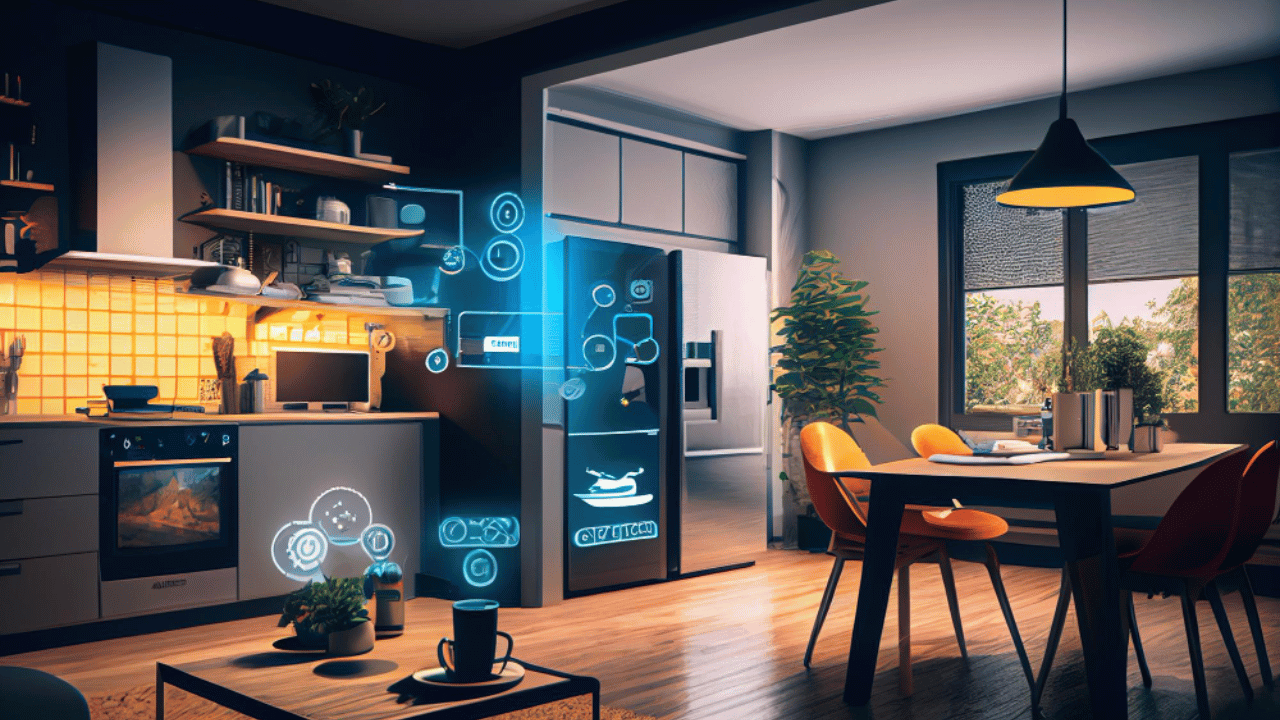
1. The Impact of Smart Homes on the Environment Smart devices, in general, are designed to be energy-efficient. For instance, smart LED lights are known for their minimal energy consumption. Moreover, thermostats with smart technology help regulate energy usage, ensuring that there’s no excess energy wasted in heating or cooling.
2. Smart Homes: A Boon for the Environment By offering eco-friendly solutions such as controlled lighting, adaptive window treatments, and efficient climate control, smart homes significantly reduce energy consumption. This not only helps in cutting down energy bills but also ensures a positive environmental impact.
3. Sustainability Through Smart Homes One of the primary ways a smart home promotes sustainability is by enhancing energy efficiency. Relying on outdated or inefficient devices can inadvertently increase a home’s carbon footprint. Transitioning to contemporary low-energy devices turns a traditional home into a more sustainable one. Moreover, these smart home devices can often diminish maintenance costs, bolster the health of the residents, and decrease the pollutants released within the living space.
4. The Green Side of “Smart” Technology Smart technology is synonymous with low-energy devices. By adopting this technology, users can substantially reduce their carbon footprint, making it an ideal choice for individuals who are environmentally inclined.
5. Debunking the Myth: Smart Home Energy Consumption Contrary to popular belief, smart homes don’t consume more electricity than their traditional counterparts. Research conducted on various smart devices, like thermostats and lights, demonstrates that these devices are more energy-efficient than their conventional counterparts. One of the prime motivations for homeowners to transition to smart devices is the potential for energy-saving. A notable study titled “The State of the Connected Home 2022” reported that 45% of respondents embraced smart home technology chiefly because it amplifies the household’s energy efficiency.
6. Smart Home Automation’s Role in Environmental Conservation Smart home automation plays a pivotal role in curbing energy consumption. This is achieved by programming energy-intensive devices, including heaters, lights, irrigation systems, and more, to operate only under specific conditions or based on predetermined schedules. Additionally, the data insights procured from these smart systems can guide users in optimizing their devices further to accentuate energy efficiency.
Assessing the Environmental Impact of Smart Homes
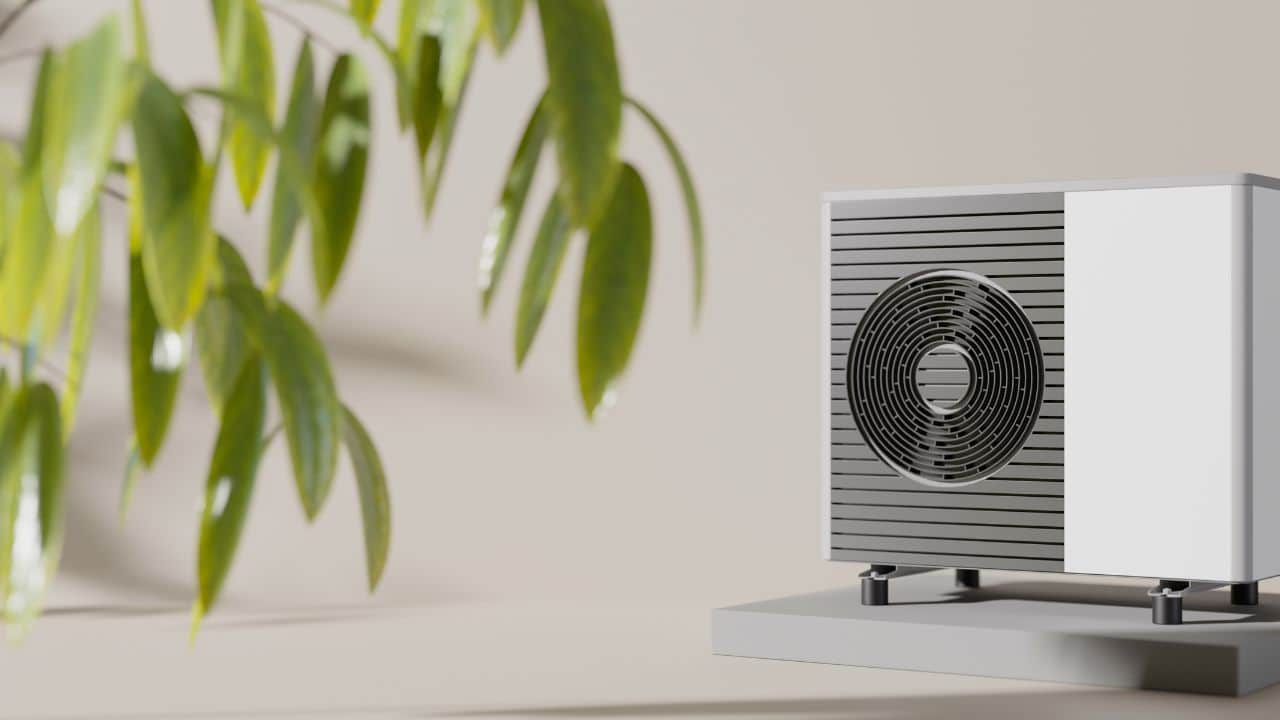
Smart Homes and Energy Efficiency: The Real Picture It’s widely believed, as highlighted by TechUK’s “The State of the Connected Home 2022”, that smart homes can enhance a household’s energy efficiency. A significant 45% of respondents adopted smart home technologies with this in mind. But does this perception align with reality? Can incorporating smart tech actually bring down energy consumption and diminish a home’s environmental impact?
While it’s tempting to assume that integrating more devices would inevitably lead to increased energy costs and a broader carbon footprint, the reality is quite the opposite. Comprehensive research, some of which we will delve into, proves that smart homes can pave the way for greener solutions, replacing conventional devices that are notorious energy guzzlers, spanning across lighting, climate control, windows, and beyond.
Using old, inefficient systems like HVACs, traditional lighting, and irrigation systems can not only balloon energy costs but may also negatively affect local air quality by emitting pollutants.
The Shift to Smart Lighting An excellent point of entry when considering a smart home’s ecological footprint is its lighting system.
There’s a common query: Do smart lights genuinely conserve energy? The answer becomes clear when households transition to smart bulbs, like Philips Hue.
Though most consider light bulbs as minimal energy consumers, swapping to smart bulbs can indeed make a significant environmental difference.
The most impactful change stems from trading traditional incandescent bulbs for LEDs. All smart bulbs, Philips Hue included, employ LED technology. This shift to LEDs can ramp up lighting’s energy efficiency by an impressive 75%. This saving becomes particularly evident during long winter months or overcast days when lights are switched on much earlier in the day.
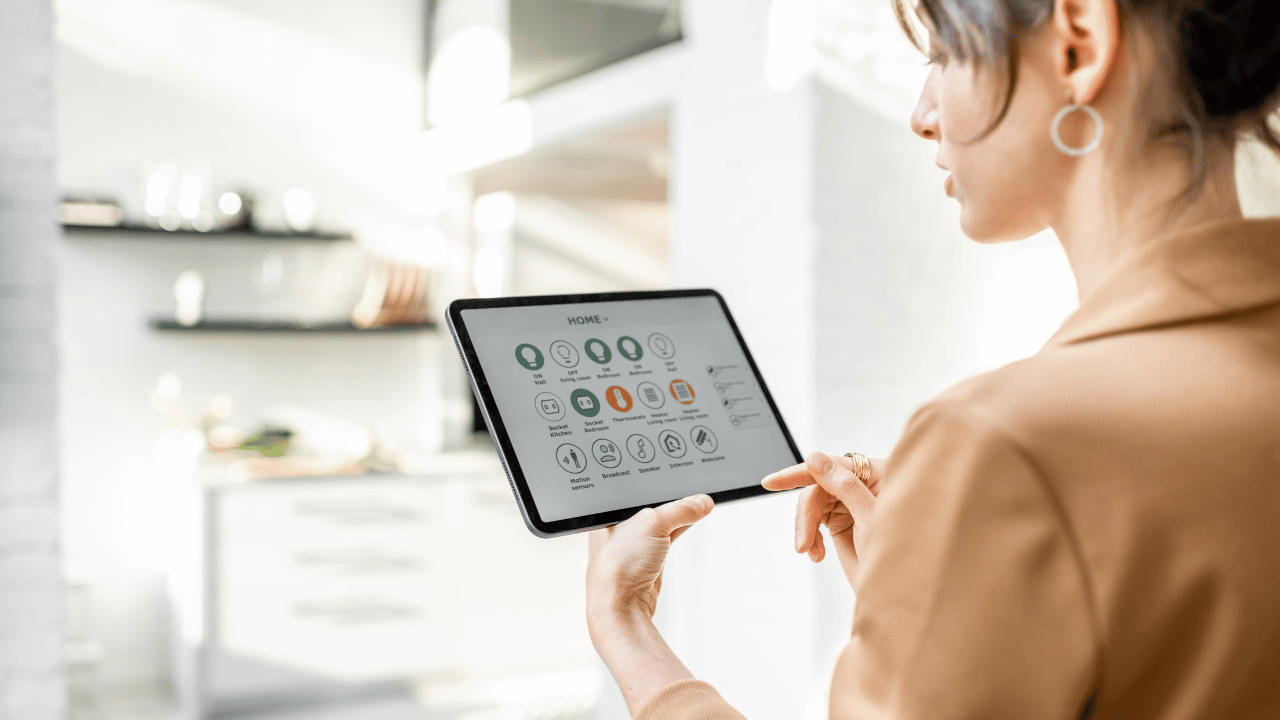
The Nuances of Smart Lighting Control Smart bulbs offer more than just LED capabilities. While it’s true that every smart bulb is an LED, the converse isn’t accurate. So, what additional advantages does smart lighting provide?
Smart bulbs seamlessly integrate into your smart home network, granting remote control through devices like the Rithum Switch smart home touch panel or even dedicated apps. This means you can do away with conventional lighting systems, ushering in not only a tech upgrade but also tangible energy savings coupled with enhanced functionality.
Modern smart bulbs, such as the Philips Hue, offer features like dimming and color changes. Utilizing dimmers can chalk up extra energy savings of about 19%. Additionally, these bulbs can be programmed to operate based on specific schedules or conditions, playing a further role in curbing energy consumption.
Reducing Carbon Footprints Through Heating and Cooling A significant contributor to a home’s carbon footprint is its heating and cooling systems. Data indicates that nearly 19% of the UK’s greenhouse gas emissions are produced by heating our living and working spaces. Alarmingly, from this percentage, over three-quarters originate from residential buildings.
To make a significant dent in these carbon emissions, integrating a smart thermostat into your home should be a priority. These devices not only enable homeowners to manage their heating remotely but also provide insights into the environmental effects of their heating habits. By adopting a smart thermostat, you won’t just be minimizing carbon emissions; you’ll also notice tangible savings on energy bills due to reduced consumption. Just like smart lighting solutions, smart thermostats can be smoothly integrated into broader home automation systems, facilitating easy climate control.
For instance, certain smart home panels come equipped with temperature sensors, allowing users to effortlessly regulate their home’s climate. These panels showcase the room’s current temperature and empower users with the option to adjust heating schedules, ensuring it’s activated only when necessary, thus optimizing energy usage.
The Role of Sensors in Smart Homes
Efficiency Through Automation A notable study by Finnish experts highlighted that home automation could result in a 12.78% reduction in a home’s original emissions. Central to this efficiency are smart home sensors.
A variety of smart sensors can be strategically placed throughout the home. They enable automation based on specific conditions or set routines. Common examples include light and temperature sensors, which ensure lights or thermostats are turned off if forgotten or based on certain conditions.
Another vital inclusion is water leak sensors. Positioned in concealed spots, these sensors can detect leaks early on, preventing extensive damage. The EPA has found that household leaks lead to the wastage of approximately 1 trillion gallons of water annually, which is environmentally detrimental. To put this into perspective, this is equivalent to the water volume of over 1,500 Olympic-sized swimming pools. Installing smart leak sensors at vulnerable points, like under sinks or near washing machines, can play a pivotal role in conserving water.
Window Treatments: The Unsung Heroes
Harnessing the Power of Windows for Energy Savings While smart homes are often associated with high-tech gadgets, it’s the window treatments that often go unnoticed, despite their significant potential for energy savings. Automated window treatments, such as roller shades and blinds, when integrated into the smart home setup, can offer dual benefits of convenience and a reduced carbon footprint.
Automated shades, coupled with home sensors, can be programmed to open or close based on the day’s weather conditions. For instance, during cold days, shades can be set to retract, allowing sunlight to naturally warm the interiors. Conversely, during sweltering summer days, shades can automatically close to prevent excess heat, reducing the reliance on air conditioning.
While more common in commercial settings, smart windows equipped with thermochromic technology have been shown to cut down energy consumption by up to 8%. They achieve this by dynamically adjusting to either block or let in sunlight. This innovation is expected to eventually become a staple in residential homes.
Professional Touch in Smart Home Integration
Enlisting the expertise of professionals in the smart home installation ensures that homeowners get the most out of their investment, optimizing energy efficiency and sustainability while also achieving a seamless user experience.
Optimal Setup and Responsibility The rise of smart homes brings forth an essential question: Is it better to embrace a do-it-yourself (DIY) approach or to hire a professional for installation? The effectiveness of a smart home, particularly in terms of energy efficiency, can be influenced by the installation method chosen.
Professional installation technicians possess the knowledge and expertise to install devices seamlessly and efficiently. Their training allows them to understand the nuances of each device and determine the best method of installation. In many cases, a trained professional may be better equipped than even the most technologically proficient homeowner. Additionally, many professionals hold certifications, which serve as a testament to their skills.
Should there be any hiccups during the installation process, professionals will typically assume responsibility, ensuring that any issues are addressed promptly and effectively.
Personalized Touch with DIY Despite the advantages of professional installation, some homeowners prefer the DIY approach. This option often provides more flexibility in device selection and placement. While professionals might have certain protocols or guidelines they follow, DIY installations allow homeowners to make personalized decisions. However, those opting for DIY should be confident in their abilities and understand the intricacies of the installation process.
Understanding Smart Home Challenges
The Reliability of Connectivity The benefits of a well-functioning smart home system are manifold, especially in terms of its positive environmental impact. However, for these benefits to be realized, the system must operate without glitches.
One of the challenges faced by smart homeowners is the occasional internet outage. While these occurrences might be infrequent, nearly everyone has faced connectivity issues at some point. An internet disruption in a traditional home can be a nuisance, but in a smart home, it’s magnified manifold. Therefore, evaluating the reliability of your local internet connection becomes crucial before integrating smart devices.
However, it’s worth mentioning that not all smart devices are internet-reliant. Some gadgets connect via WiFi and can function independently during an internet outage, though the interconnected devices might need an active internet connection.
Battery Considerations and Environmental Impact
Evaluating Device Upkeep Another challenge presented by smart homes pertains to the devices chosen for installation. Wireless devices, though convenient, come with the added responsibility of regular charging. Frequent battery drain could potentially increase energy consumption, diminishing the appeal of wireless solutions compared to wired alternatives.
Certain devices, such as cameras and motion sensors, might have a higher energy demand and thus deplete batteries faster than low-energy devices like door sensors. A non-functional device due to a dead battery not only affects the smart home’s efficiency but also its overall utility. Hence, when selecting devices, considering battery longevity is imperative.
Maximizing Smart Home Efficiency with a Hub
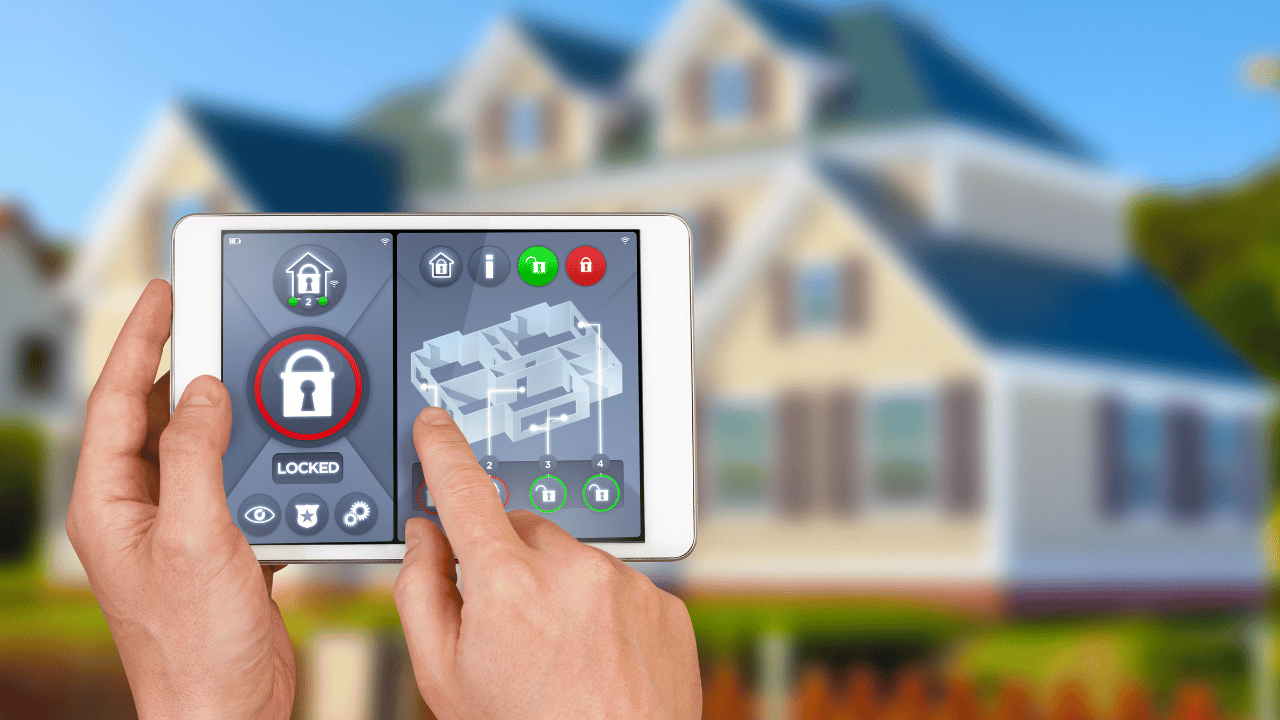
Unifying Device Control One of the cornerstones of an efficient smart home ecosystem is a smart home hub. This tool can mitigate many challenges associated with managing various devices in a smart home. The beauty of smart home hubs lies in their versatility; they often support a range of devices from different manufacturers. This means homeowners have the flexibility to choose devices from various providers yet control them from a single centralized location.
Instead of juggling between multiple apps or remotes for each device, a hub offers a consolidated control platform. This streamlines the user experience, allowing homeowners to effortlessly manage and automate their favorite devices.
Addressing Multi-user Challenges Many households, especially those with multiple members, can sometimes find it challenging to adopt smart home technology. A common hurdle is the dependency on various apps to manage different smart devices. While it’s convenient to adjust settings like lighting or temperature remotely, it can become a hassle when several users need access or when one doesn’t want to continually rely on a phone for simple changes.
Devices that are complicated or inconvenient to use often remain underutilized. Considering the potential benefits of smart devices—like efficient lighting and climate control—it’s imperative that these tools are easily accessible to all household members. A well-integrated smart hub ensures that smart devices are not just luxury items but are utilized to their fullest potential, enhancing convenience while reducing environmental impact.
Enhancing Accessibility for All A notable example of such a centralized system is the decentralized smart system that some advanced switches offer. They can seamlessly integrate with various smart devices, effectively replacing traditional switches. Such integration ensures that every household member, irrespective of their tech-savviness, can easily access and control smart devices, maximizing both convenience and environmental efficiency.
Conclusion

In an era where environmental sustainability is no longer just a preference but a necessity, smart homes emerge as a beacon of hope. They seamlessly blend technological advancement with environmental responsibility, ensuring that homeowners don’t have to choose between convenience and caring for the planet. Through their energy-efficient operations, intelligent resource management, and actionable data insights, smart homes elevate daily living to a standard that not only enhances comfort but also reduces ecological footprints. As homeowners and tech enthusiasts alike continue to recognize and harness the environmental benefits of smart homes, we inch closer to a future where residential spaces harmoniously coexist with nature, setting a precedent for sustainable living in the 21st century.
